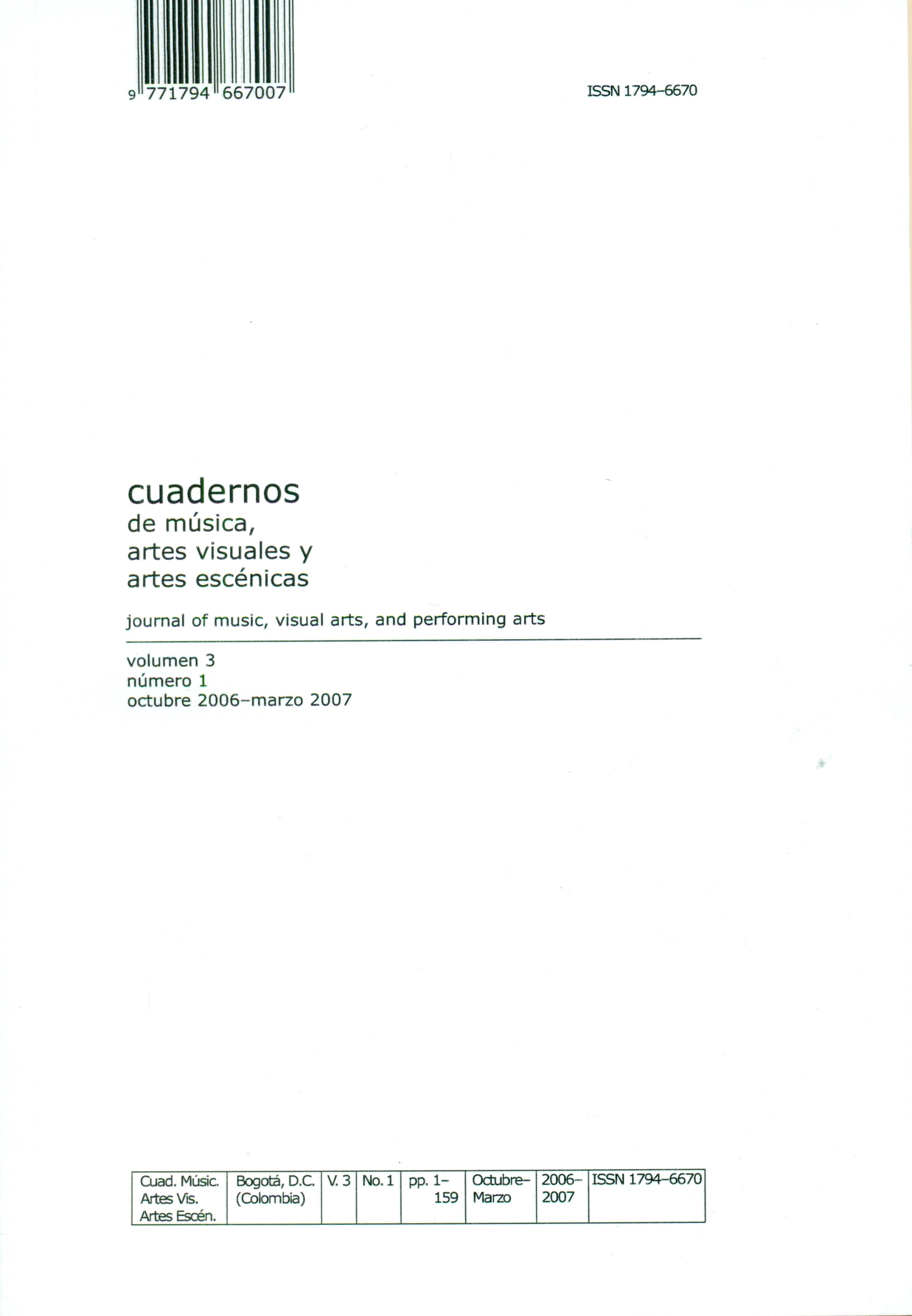Resumen
Con este escrito pretendo hacer un acercamiento a Kottos, la pieza para violonchelo solo compuesta por Iannis Xenakis en 1977, desde el análisis de los materiales musicales y sus distintas relaciones e interacciones a través de la evolución de la pieza, partiendo a su vez del planteamiento de una analogía directa con un personaje mitológico que inspiró su creación y de conceptos extra–musicales alrededor de esta idea del mito en cuestión. De cierta forma esta pieza nos está mostrando la posibilidad de una comprensión distinta de Coto, un monstruo horrible y rechazado de la Mitología Griega. Tal vez nos muestra rostros invisibles; tal vez sus sueños y sus deseos y cómo ellos se mezclan con la actualidad del personaje para potenciarlo de maneras distintas. Pero en todo caso, no limita al gigante a una mera aparición desproporcionada y horrenda, como sí lo hicieron las teogonías en la Mitología Griega.Esta revista científica se encuentra registrada bajo la licencia Creative Commons Reconocimiento 4.0 Internacional. Por lo tanto, esta obra se puede reproducir, distribuir y comunicar públicamente en formato digital, siempre que se reconozca el nombre de los autores y a la Pontificia Universidad Javeriana. Se permite citar, adaptar, transformar, autoarchivar, republicar y crear a partir del material, para cualquier finalidad, siempre que se reconozca adecuadamente la autoría, se proporcione un enlace a la obra original y se indique si se han realizado cambios. La Pontificia Universidad Javeriana no retiene los derechos sobre las obras publicadas y los contenidos son responsabilidad exclusiva de los autores, quienes conservan sus derechos morales, intelectuales, de privacidad y publicidad.
El aval sobre la intervención de la obra (revisión, corrección de estilo, traducción, diagramación) y su posterior divulgación se otorga mediante una licencia de uso y no a través de una cesión de derechos, lo que representa que la revista y la Pontificia Universidad Javeriana se eximen de cualquier responsabilidad que se pueda derivar de una mala práctica ética por parte de los autores. Como consecuencia de la protección brindada por la licencia de uso, la revista puede publicar retractaciones o corregir la información ya publicada. La publicación de contenidos en esta revista no representa regalías para los contribuyentes.


